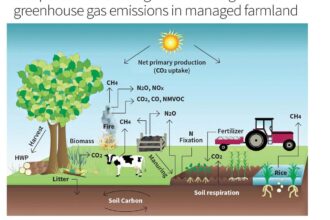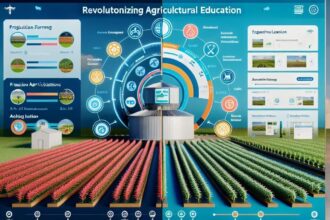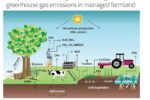Introduction — Why Haryana matters (and why 2025 is a turning point)
Haryana, carved out of Punjab in 1966, sits astride two political worlds: it’s deeply agrarian in many districts and deeply urban/industrial in others. This dual identity — villages dominated by traditional caste networks and cities dominated by new-money professionals and migrants — makes the state a microcosm of modern India’s political tensions. Politicians must simultaneously address irrigation and crop prices, rural employment and panchayat-level governance, as well as road connectivity, corporate investment and municipal services in fast-growing city clusters.
The significance of Haryana’s politics stretches beyond state borders: its legislators and leaders often have national roles, and the state’s electoral patterns have served as an early signal for shifting national moods. The 2024 electoral cycle (both Lok Sabha and Assembly events) was especially consequential. The BJP won a plurality of seats and formed the government again in the October 2024 Assembly election, while Congress picked up ground in several areas — a pattern of competitive bipolarity that set the stage for intense reorganization in 2025. Official tallies show BJP winning 48 seats and Congress 37 in the 90-seat assembly in October 2024. Election Commission of India+1
This guide explains the forces behind those numbers and looks forward: who is consolidating power, who is rebuilding, and which social movements will influence the next round of contests.
A quick political history (why old battles still matter)
Understanding contemporary Haryana requires a short detour into the past. From its creation, the state’s politics oscillated between national parties (notably Congress) and strong regional players. The Devi Lal–led rural politics model (later institutionalized through parties like the Indian National Lok Dal — INLD) introduced a form of personality-driven regional leadership rooted in farmer mobilization and caste coalitions. Over the decades, almost no party managed long-term dominance; anti-incumbency and local issues have repeatedly reshaped the state’s leadership.
The 1990s and 2000s saw periodic Congress comebacks, but the BJP’s national rise in the 2010s — combined with regional splits (INLD splitting to create the Jannayak Janata Party, JJP) — reconfigured the political field. By 2024 Haryana had swung into competitive bipolarity between BJP and Congress, with regional parties and independents holding the balance in several constituencies. Wikipedia+1
The structural terrain: geography, economy and social composition
Haryana is compact geographically but diverse politically. The northwest and central districts (like Rohtak, Jind and Hisar) remain more agrarian; areas around Gurugram, Faridabad and Sonipat pulse with IT, manufacturing and services economies. This urban–rural split creates divergent priorities: urban voters increasingly care about municipal governance, pollution, commuting and jobs; rural voters prioritize procurement prices, irrigation, power supply and farm credit.
Caste too is a persistent lens. Jats historically dominated rural power structures; other influential groups include Ahirs/Yadavs (especially in south-western districts), Brahmins, Punjabis with migrant roots, Dalits and a broad spectrum of OBC communities. Modern parties attempt to craft cross-caste coalitions, but identity politics remains a decisive variable in candidate selection, campaign messaging and coalition-building strategies.
The 2024 electoral reality — what the numbers tell us
The October 2024 Assembly election results are the most recent, authoritative marker of Haryana’s political landscape. Official Election Commission tallies show:
- BJP — 48 seats (out of 90)
- Indian National Congress (INC) — 37 seats
- INLD — 2 seats
- Independents — 3 seats
These numbers capture a competitive state: BJP won a plurality and returned to power with a stronger foothold, while Congress closed gaps in several areas. The Jannayak Janata Party (JJP), which had previously been a critical coalition partner to BJP at the state level (2019–2024), saw a precipitous decline in its seat count in 2024, with its leader Dushyant Chautala losing in his constituency and the party’s assembly presence greatly diminished. The constituency-level results — including high-profile losses — illustrate the volatility: for example, Dushyant Chautala trailed by large margins in Uchana Kalan in 2024. Election Commission of India+2Election Commission of India+2
These results affected who controlled levers of local patronage and policy, set legislative agendas, and shaped ministerial appointments going into 2025.
The Top Parties & Leaders (deep profiles)
Below I unpack the major parties and leaders, their 2024 performance, internal dynamics in 2025, and the main questions each faces.
1) Bharatiya Janata Party (BJP) — consolidation amid coalition stress
2024–25 position: BJP emerged as the largest single party in the 2024 assembly elections, securing 48 seats. That result gave the party the objective advantage of forming the government on its own terms, but the years leading up to 2024 were marked by strategic alliances and tensions — notably the 2019 partnership with JJP that produced Dushyant Chautala as deputy chief minister. By 2024 coalition dynamics had shifted, and in the aftermath the BJP sought to project an image of consolidation under refreshed leadership at the state level. Election Commission of India+1
Key leaders: Manohar Lal Khattar was the BJP’s long-serving chief minister since 2014 and a familiar governance face. However, leadership changes and internal party management adjustments were visible in 2024–25 as the BJP reorganized its state unit and portfolio allocations to manage factional pressures — typical after an intense electoral cycle. Reports around early 2024 also noted ministerial reshuffles and the elevation of new leaders to key positions. Election Commission of India
Strengths: Central resources, disciplined organization, and a broad appeal among urban voters and many non-Jat rural constituencies.
Challenges: Managing local coalitions and independents, addressing persistent rural grievances (especially the consequences of farm-sector stress), and ensuring state-level governance delivers measurable benefits to newly urbanized populations.
What to watch (2025): Will the BJP convert its 2024 seat tally into durable governing majorities by strengthening local organizations and creating credible development narratives that address both urban infrastructure and rural livelihoods?
2) Indian National Congress (INC) — revival attempts and the Hooda factor
2024–25 position: Congress mounted a strong challenge in 2024, capturing 37 seats and closing the gap with BJP in many constituencies. The results were interpreted as a near-miss that highlighted Congress’s potential to compete statewide if it managed leadership unity and broader social outreach. Bhupinder Singh Hooda — a former chief minister and senior Congress leader in Haryana — remained a central figure in the party’s strategy and narrative. Analysts noted that Congress’s near-success in 2024 was built on targeted rural outreach and tactical campaigning in key districts. The Times of India+1
Key leaders: Bhupinder Singh Hooda (veteran leader), rising local faces in Congress’s Haryana unit, and district-level organizers who reconnected the party to farm and rural constituencies.
Strengths: Deep roots in several districts, a historically robust organizational network, and a compelling counter-narrative to BJP’s urban development messaging.
Challenges: Managing internal leadership disputes (calls for generational change and broader inclusion of local leaders), rebuilding trust among younger voters drawn to alternative narratives, and converting near-success into a winning coalition.
What to watch (2025): Will Congress renew its state leadership and diversify candidate pipelines beyond established families and faces? The party’s ability to balance Hooda’s experience with credible new entrants will determine if Congress can take the next step.
3) Jannayak Janata Party (JJP) — from kingmaker to rebuilding house
2024–25 position: JJP was the breakout regional force in 2019, winning 10 seats and becoming the kingmaker in a BJP-led government. That partnership gave Dushyant Chautala the deputy chief ministership. But by the 2024 elections, JJP’s fortunes waned markedly: the party’s seat count fell dramatically and its leader lost in Uchana Kalan constituency — a symbolically significant setback for the regional force. The decline underscored the volatility for mid-sized regional outfits that depend on a narrow vote base and on the optics of power-sharing. Wikipedia+1
Key leaders: Dushyant Chautala (youthful face and the most nationally visible JJP leader), regional organizers who managed the party machine in rural pockets.
Strengths: A legacy connection to the Devi Lal political family, initial popularity among segments of rural youth, and the capacity to act as coalition partners that punch above their numbers.
Challenges: How to rebuild a distinct identity after an alliance breakup and electoral losses, and whether to seek new alliances (with INLD or other regional players) or refocus on grassroots rebuilding.
What to watch (2025): Attempts at organizational revival, recruitment drives among rural youth, and possible tactical alliances ahead of panchayat and municipal cycles.
4) Indian National Lok Dal (INLD) — legacy party seeking resurgence
2024–25 position: INLD, the party historically connected to Devi Lal’s legacy, has been weakened by splits, internal infighting and the rise of new regional formations (including JJP). In 2024 the INLD managed only a small presence in the assembly, but it still retains symbolic heft in some rural constituencies and among older cadres. INLD’s future depends on whether it can unify Chautala-family factions and recapture the agrarian mobilization that once propelled it to statewide dominance. Wikipedia
Key leaders: Members of the Chautala family, local party veterans.
Strengths: Historical legitimacy among certain rural voters and an organizational memory that can be rebuilt.
Challenges: Fragmentation, generational handover, and competing with JJP for the same rural vote bank.
What to watch (2025): Any rapprochement with other regional parties or tactical alliances ahead of local elections that might rebuild INLD’s electoral footprint.
5) Aam Aadmi Party (AAP) — city-first strategy and slow penetration
2024–25 position: AAP’s expansion beyond Delhi and Punjab into Haryana has been cautious. The party pitched governance models (education, health, municipal services) attractive to urban voters, but it struggled to break incumbent local networks. In the 2024 general and assembly cycles, AAP did not make major electoral inroads, though it did register a modest vote share in urban pockets where governance messaging resonates. Wikipedia+1
Key leaders: State-level AAP organizers, civic activists aligned with the party’s governance brand.
Strengths: Credibility on municipal and service-delivery issues; a narrative focused on tangible governance outcomes.
Challenges: Building a state-level organization robust enough to contest assembly-wide politics and to withstand established local machines.
What to watch (2025): Will AAP focus on municipal politics (mayor and ward-level wins) to build a bottom-up base in Gurugram and Faridabad, or will it attempt a broader state-level push?
6) Independents and local heavyweights — the power of the “local”
Independents play outsized roles in Haryana. The state’s politics often rewards strong local personalities whose networks and patronage can outcompete party machines in single constituencies. In close assemblies, independents have become kingmakers; their shifting allegiances can prop up or topple governments. The 2024 election— with three independents winning — reinforced their continued relevance. Election Commission of India
What to watch (2025): Whether independents consolidate into small regional platforms or continue to operate as bargaining chips with national parties.
Social and structural dynamics that decide Haryana elections
Beyond parties and leaders, several deeper forces shape Haryana’s politics. Understanding these explains why votes move the way they do.
Caste: fragmented dominance, strategic alliances
For decades Jats were the single most visible political block in rural Haryana. Over time, however, their dominance has been diluted by successful efforts to mobilize non-Jat OBCs, Dalits and urban migrant communities. Parties now compete to build cross-caste coalitions rather than rely on single-community hegemony. Candidate selection frequently mirrors these calculations: parties nominate local leaders who can unify several caste groups or split opponents’ core votes. The result is more fluidity and more constituency-by-constituency tailoring of campaigns.
Agrarian economics: MSPs, procurement and the shadow of protest
Agrarian economics continues to be a strategic issue. The farmers’ protest that gained national prominence in 2020–21 involved large numbers of farmers from Haryana and nearby Punjab and had lasting political consequences: it sharpened farmer demands on procurement prices, subsidies, and market protections. Parties perceived as sympathetic to farmers’ concerns gained credibility in rural hearts and minds. Continued crop-price volatility, water scarcity in canal-irrigated districts, and the need for rural employment remain vote-movers in Haryana. Shankar IAS Parliament+1
Urbanization and municipal politics
The Gurugram–Faridabad corridor has created a new class of voters focused on urban infrastructure, traffic management, pollution control, and service delivery. Municipal elections in these regions are training grounds for new leaders and can be bellwethers for state-level shifts. Parties that succeed in creating visible improvements in municipal governance enjoy political dividends in urban assembly constituencies.
Youth, social media and the new public square
Young voters in Haryana are more connected and issue-aware than previous generations. Social media platforms — WhatsApp networks, Instagram, and video apps — accelerate the spread of narratives and can amplify local grievances or candidate images quickly. Student unions and campus politics in universities like Rohtak and Hisar continue to feed state-level leadership pipelines.
Women’s political participation
Haryana has been slower than some states in electing women to state assemblies, but local-level reservation policies for panchayats have improved grassroots female participation. The challenge is translating local-level gains into more representation at the assembly and parliamentary levels — something parties are under pressure to address if they want broader appeal among female voters.
Deep case studies: turning points that reshaped power
To make this analysis tangible, here are two case studies that illuminate how events and strategies interacted to alter Haryana’s political map.
Case Study 1 — The BJP–JJP 2019 alliance and its unraveling
In 2019 JJP’s ten seats gave the small party kingmaking leverage. Dushyant Chautala’s role as deputy chief minister demonstrated how a compact regional party could convert regional legitimacy into policy influence. But power-sharing proved fraught; tensions over portfolios, policy priorities and local seat-sharing emerged. By the 2024 election the alliance’s benefits had eroded; JJP paid an electoral price for perceived compromises, and the party’s subsequent electoral collapse was a dramatic illustration of how alliance politics can both grant instant power and introduce long-term vulnerabilities. Wikipedia+1
Political lesson: Short-term coalition gains need deep organizational and ideological coherence to translate into sustainable electoral strength.
Case Study 2 — 2020–21 Farmers’ Protests: policy to politics
The nationwide farmers’ demonstrations were rooted in farmer anxiety about liberalized procurement mechanisms and the long-term erosion of assured prices. Haryana was a frontline state: its farmers camped at borders, organized logistics, and sustained long political pressure on national leaders. The protests’ political reverberations forced parties to reassess how they addressed rural economic security. Even after the repeal of contentious farm laws, demands for statutory MSP guarantees, better procurement systems, and rural safety nets endured — and politicians who ignored these demands found themself on unstable electoral ground. Shankar IAS Parliament+1
Political lesson: Large, sustained social movements can convert policy debates into durable electoral issues, forcing party realignment and policy reassessment.
The 2025 political battleground: five dynamics to watch
Looking ahead from the vantage of 2025, five dynamics are likely to shape the state’s next major contests:
- Bipolar competition consolidates — BJP and Congress are likely to remain the two core poles of competition, but margins will be determined by how successfully each crafts local coalitions and recruits credible candidates.
- Regional party survival — JJP and INLD must rebuild or reconfigure. If they fail to do so, their core voters may be absorbed by larger parties, altering rural vote math.
- Independent candidates’ bargaining power — In close assemblies, independents can still decide government formation and policy priorities.
- Farmer and rural livelihood policy — Farm income shocks, procurement mechanisms and water-sharing arrangements will be perennial flashpoints.
- Urban municipal governance as a proving ground — Gurugram and Faridabad municipal outcomes will matter more as urban voters prioritize service delivery and quality-of-life issues.
Practical strategies for parties and leaders in 2025
What should parties and leaders do in response to this terrain? Here are pragmatic strategic notes drawn from the political realities above.
For BJP
- Strengthen district-level organizations and move beyond “one-size-fits-all” urban development narratives to targeted rural policy interventions.
- Institutionalize coalition management to avoid sudden alliance breakdowns that can alienate regional partners.
For Congress
- Invest in candidate renewal and decentralize candidate selection to avoid concentration of power within narrow leadership circles.
- Translate near-election gains into durable grassroots presences — particularly among non-Jat OBCs and young voters.
For JJP & INLD
- Consider tactical alliances with non-BJP parties in selective districts to avoid vote splitting.
- Rebuild credibility through local governance wins (panchayat-level development) and a disciplined cadre-building effort.
For AAP
- Focus on municipal governance wins in urban centers as a pathway to state-level recognition.
- Build durable local cadres by delivering tangible civic improvements.
For independents
- Manage negotiating leverage carefully: local credibility is most sustainable when paired with clear development promises rather than opportunistic alignments.
How voters decide: three practical heuristics
Voters evaluate candidates and parties on a mix of identity, pocketbook and performance. Here are three practical heuristics Haryana voters often use:
- Identity first, performance next: Voters often prefer a candidate who represents their community or caste unless the challenger can convincingly demonstrate better service delivery.
- Local delivery trumps national slogan: Municipal services, school quality, power reliability and local roads are immediate determinants of voter satisfaction.
- Movement memory matters: Voters remember how parties and leaders responded during crises (e.g., the farmers’ movement). Empathy with mass movements can create long-term political trust.
Predictions (probabilistic, not deterministic): where Haryana likely heads by 2030
Politics isn’t forecasting like weather models, but certain trajectories appear more probable than others.
- Bipolarity will remain dominant: BJP vs. Congress contests will continue to define state-level politics, with regional parties determining margins.
- Urban–rural differentiation increases: Parties that successfully tailor dual narratives will have advantages.
- Farmer issues remain political flashpoints: Unless agricultural incomes and procurement security improve, rural anger will periodically resurface.
- Youth and women’s representation inch forward: Incremental gains in inclusion are likely, driven by party recruitment and changing social norms.
- Coalition fluidity remains high: Expect frequent bargainings and shifting allegiances, especially around local governance wins and panchayat cycles.
Five actionable recommendations for civic actors and analysts
- Track panchayat outcomes: Local election results are early indicators of shifting loyalties and emerging leaders.
- Monitor procurement policy: Any central or state changes to MSP or procurement will have immediate political implications.
- Map caste alliances at constituency level: Statewide analyses miss important micro-alignments that shape seats.
- Watch urban municipal performance: Gurugram and Faridabad municipal successes/failures will influence urban assembly results.
- Follow youth-led movements and campus politics: Student unions and campus mobilizations often signal future political actors and agendas.
Conclusion — Haryana as a political laboratory
Haryana in 2025 is a laboratory of modern Indian politics: the contest between national narratives and local grievances, the interplay of caste identities and class aspirations, and a tug-of-war between urban governance demands and rural livelihood insecurities. The state will remain politically consequential because it blends big-state issues (agriculture, coalition politics) with small-state deliverables (municipal services, panchayat governance).
If there’s a single takeaway for civic actors, analysts and voters alike it is this: success in Haryana now requires mastery of both the micro and the macro. Parties that can marry strong local cadres, credible candidates and clear policy wins — while also telling a persuasive state-level story — will be the ones that endure.
Selected sources and further reading (key citations)
- Election Commission of India — Trends & Results, October 2024 (Haryana Assembly) — official constituency and state-level results. Election Commission of India+1
- Election Commission constituency result (Uchana Kalan) — detailed vote shares showing Dushyant Chautala’s 2024 result. Election Commission of India
- Indian Express — reporting on Haryana 2024 outcomes and post-election analysis. The Indian Express+1
- Times of India — coverage on constituency-level contests and leaders (e.g., Dushyant Chautala trailing in Uchana Kalan). The Times of India
- Analysis of farmers’ protest impacts and ongoing agrarian distress (coverage and policy articles). Shankar IAS Parliament+1









